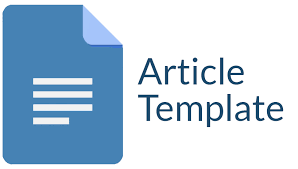Pengaruh Sugesti Positif Terhadap Kecemasan Ibu Bersalin
Abstract
95% of pregnant women around the world experience anxiety, 8-10% of anxiety is felt during pregnancy, and increases to 13% when it comes to delivery. Anxiety before delivery in pregnant women is a physiological thing, but in the process of labor will occur a series of physical and psychological changes. Anxiety arises from the fear of labor. Hypnobirthing is a natural attempt to prepare for labor by way of reprogramming pain records that have been embedded in the subconscious with positive suggestions. The purpose of this study was to determine the effect of positive suggestion in reducing maternal anxiety level. The research type is pre experiment with one group pretest posttest design. The samples of the research were 30 respondents, the sampling technique used was non random sampling with Accidental sampling method. Research instruments to measure anxiety levels using HARS. The intervention has given in 10-20 minutes. From the research results there is a decrease in anxiety levels before and after. Levels of anxiety before intervention were easy anxiety as many as 4 respondents (13.3%), medium anxiety as much as 20 respondents (66.7%), hard anxiety as much as 6 respondents (20%). Levels of anxiety after intervention were easy anxiety as much as 19 respondents (63.3%), medium anxiety as much as 2 respondents (6.7%), no anxiety as much as 9 respondents (30%). Data analysis using statistical test of wilcoxon which is decreasing of anxiety level before and after intervention with result p value = 0,001 <α 0,05 it means existence of positive suggestion effect in decreasing maternal anxiety level at BPM Soraya Palembang City 2018.
Copyright (c) 2021 Journal of Complementary in Health

This work is licensed under a Creative Commons Attribution-ShareAlike 4.0 International License.
Authors who publish with this journal agree to the following terms:
- Authors retain copyright and grant the journal right of first publication with the work simultaneously licensed under a Creative Commons Attribution License that allows others to share the work with an acknowledgement of the work's authorship and initial publication in this journal.
- Authors are able to enter into separate, additional contractual arrangements for the non-exclusive distribution of the journal's published version of the work (e.g., post it to an institutional repository or publish it in a book), with an acknowledgement of its initial publication in this journal.
- Authors are permitted and encouraged to post their work online (e.g., in institutional repositories or on their website) prior to and during the submission process, as it can lead to productive exchanges, as well as earlier and greater citation of published work












